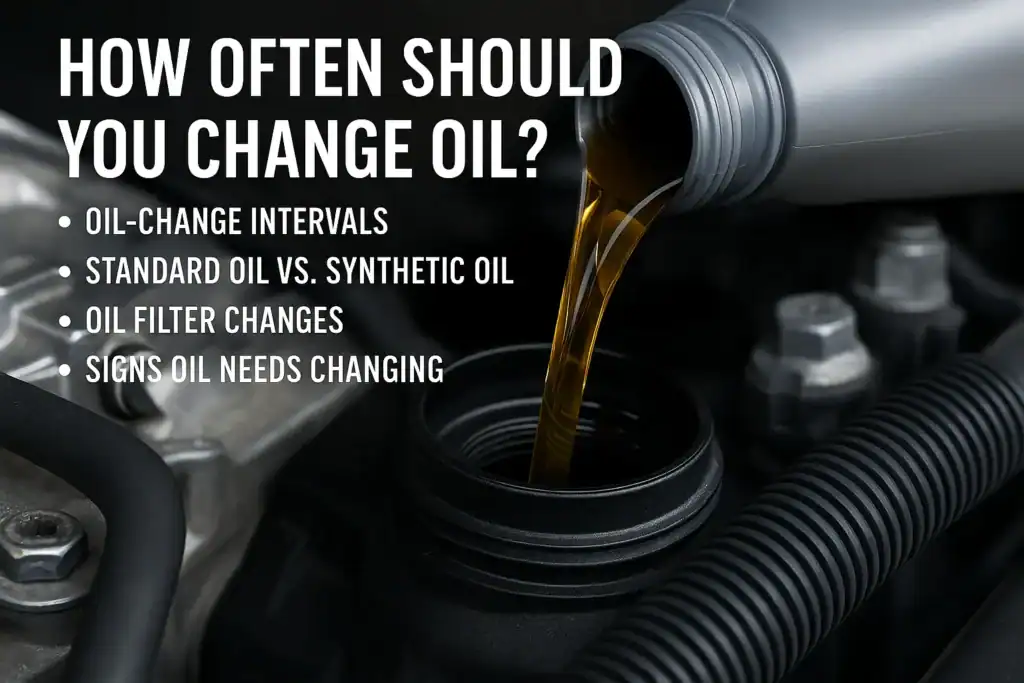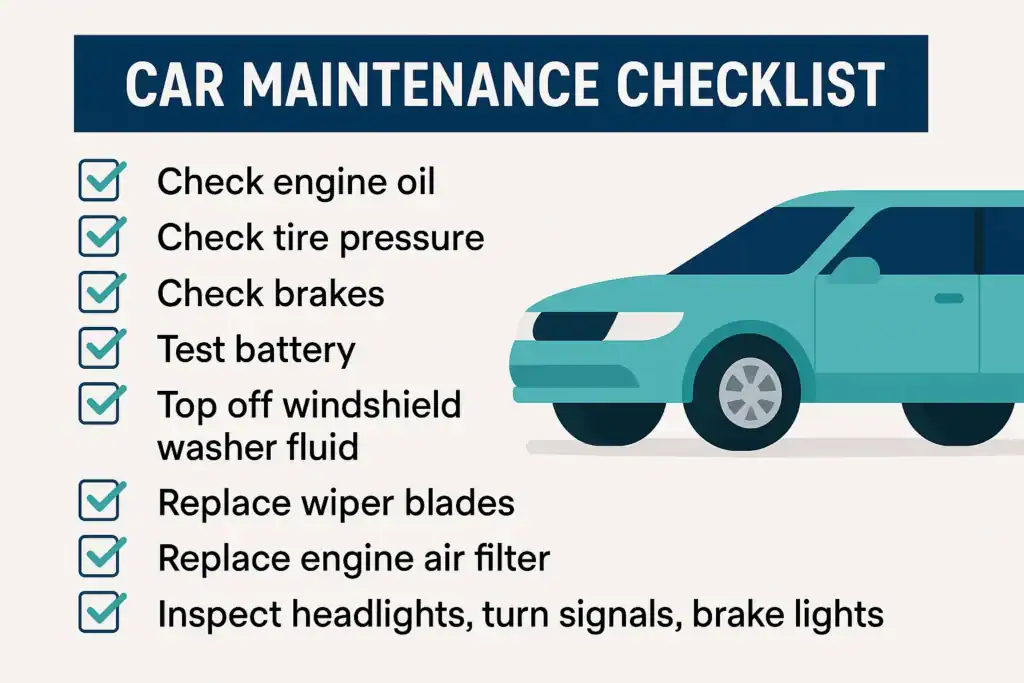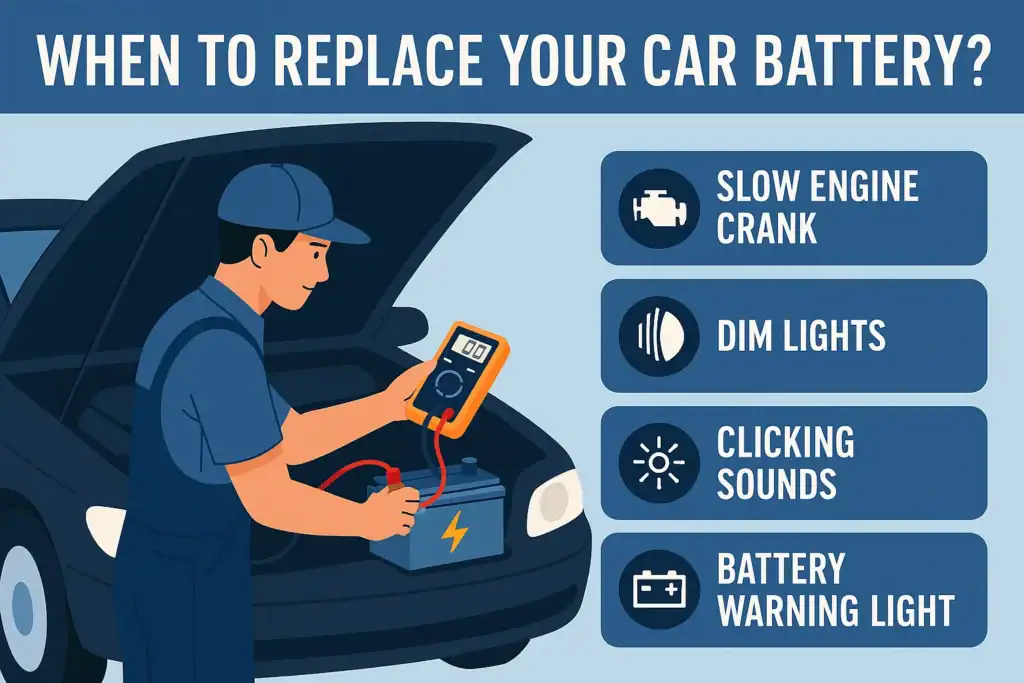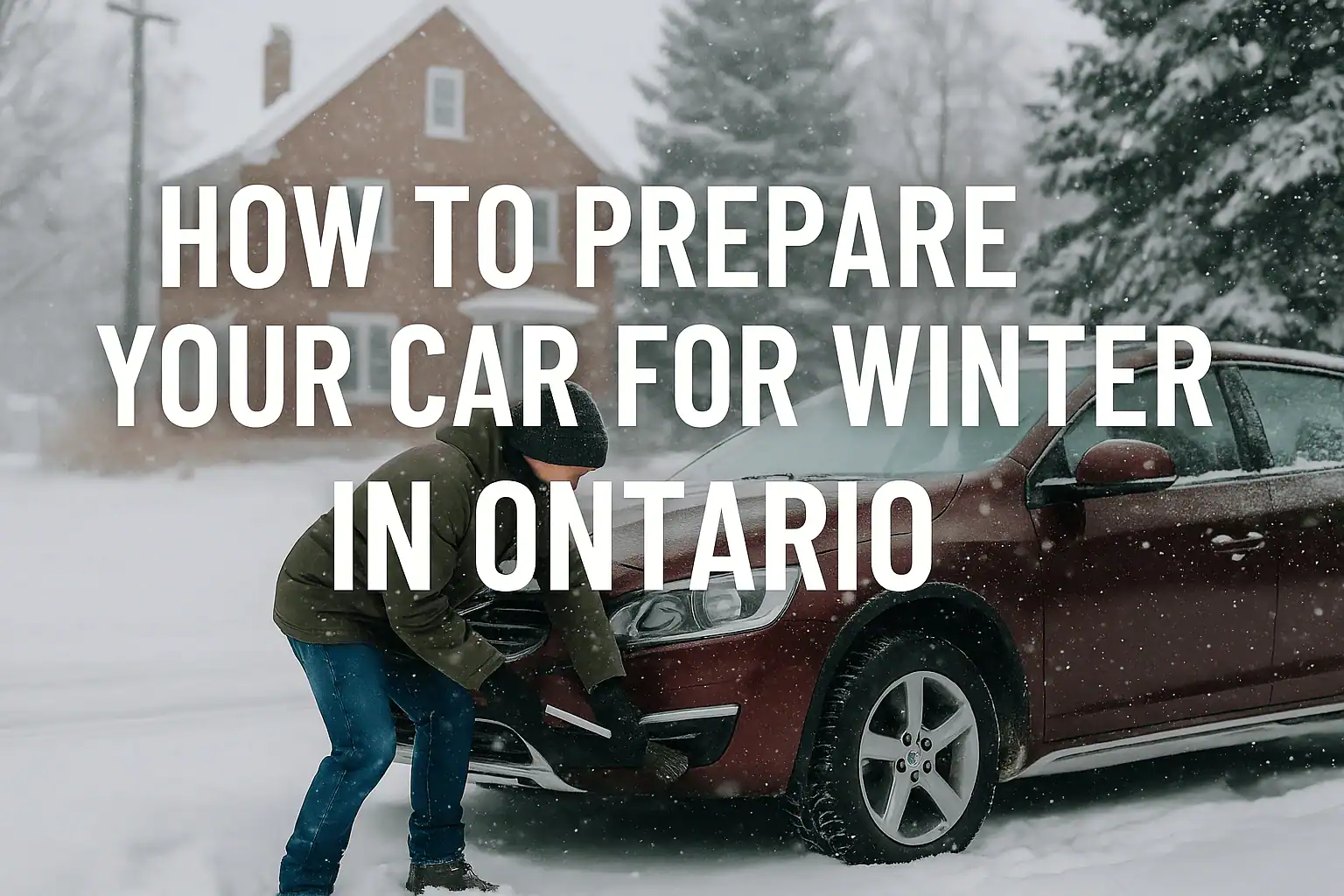
Winter in Ontario isn’t just cold — it’s unpredictable. One week you’re driving through light flurries, the next you’re stuck behind snow plows in a winter storm with -20°C wind chills and icy roads. That’s why knowing how to prepare your car for winter isn’t optional — it’s essential.
This winter prep guide breaks down exactly what to check, fix, and pack before the cold weather kicks in. Whether you’re braving daily commutes or planning a long winter drive, this checklist helps you stay safe, warm, and on the road.
1. Switch to Winter Tires (Don’t Wait!)
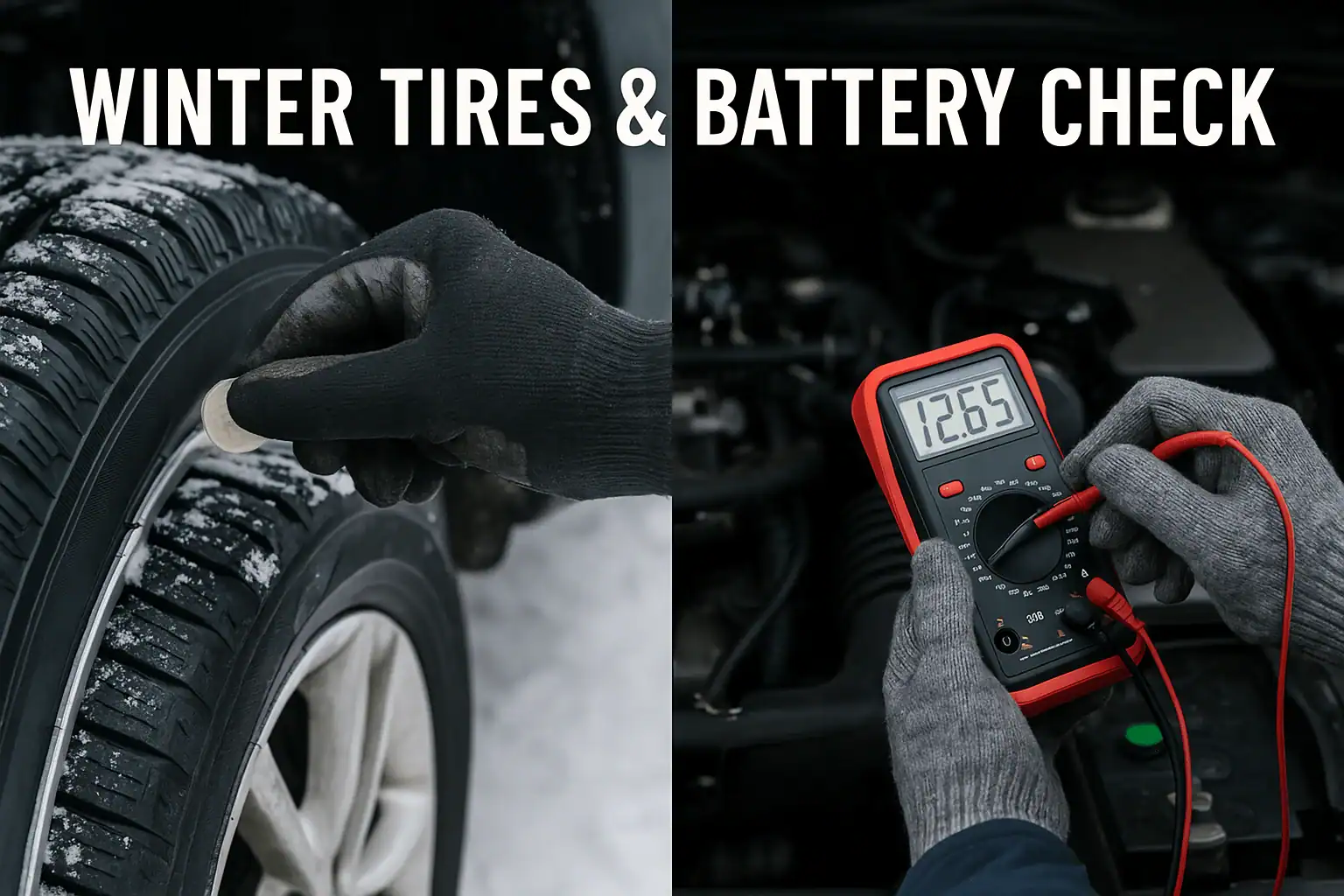
Your tires are your first line of defense against slick, snowy surfaces. Once temperatures drop below 7°C, non-winter tires begin to harden, reducing traction dramatically.
Why winter tires matter:
- Designed with tread patterns to grip on snow and slush
- Stay flexible in freezing temperatures
- Improve braking and steering response on icy roads
Pro tip: In Ontario, some insurance providers offer discounts when you install winter tires. Look for the mountain snowflake symbol on the sidewall.
2. Test and Replace Your Battery
Cold temperatures reduce your battery’s cranking power by up to 50%. If your battery is more than 3 years old, it’s time for a battery check.
- Look for signs of corrosion on terminals
- Ask your mechanic for a load test
- Replace if it’s weak — don’t risk a no-start during a snowstorm
A healthy battery is crucial for new vehicles with tech-heavy systems and for powering your rear-window defroster during winter weather.
3. Top Up Your Fluids for Winter Conditions
a) Engine Coolant (Antifreeze)
Your engine coolant must have the right antifreeze-to-water ratio (usually 50/50) to prevent your engine from freezing or overheating.
b) Windshield Wiper Fluid
Use a winter washer fluid rated for -40°C. Summer fluid will freeze in your lines and leave you blind in a winter road whiteout.
4. Replace Windshield Wipers with Winter Wipers
Standard windshield wipers aren’t cut out for snow-covered surfaces. Install heavy-duty winter wipers designed to push away snow and resist freezing.
- Also check for tears or skips in your windshield wiper blades
- Keep an extra bottle of windshield wiper fluid in the trunk
5. Inspect Your Brakes Thoroughly
Ontario’s harsh winter conditions demand good brakes. Ask for a thorough brake check, including:
- Brake pads
- Rotors
- Brake lines
- Antilock brake systems (ABS)
Driving in wintry weather without reliable brake systems is one of the top causes of winter accidents.
6. Pack a Winter Car Kit (It’s a Lifesaver)

A winter car kit should be in every trunk before the winter season kicks in. Here’s what to include:
- Ice scraper and snow shovel
- Warm winter clothing: gloves, winter coats, warm layers
- Blankets or extra warmth materials
- De-icer spray
- Flashlight + extra batteries
- Emergency food & water
- Jumper cables
- Car tools and traction mats
- First aid kit
- Emergency car kit (ready-made versions work too)
If you have children: make sure the child car seat or car seats are properly secured and not compromised by winter clothing.
7. Keep Your Gas Tank Half Full (At Least)
This old-school tip still applies. Keeping at least half a tank:
- Prevents gas line freezing
- Ensures you can idle the engine for warmth if stuck in traffic or during a winter storm
- Gives you flexibility on longer rural drives with fewer gas stations
8. Clean and Protect the Exterior
Frequent car washes aren’t just for summer. Road salt can cause long-term vehicle damage, especially around the undercarriage.
- Wash your vehicle at least biweekly during salty conditions
- Apply a wax coat before the cold winter months to protect the paint
9. Test Your Heating and Defrost Systems
Before winter arrives, confirm:
- The heater warms quickly
- Defrosters (front and rear) work efficiently
- Airflow isn’t restricted
You’ll need full visibility and extra warmth on every drive — whether it’s a school run or a snowy work commute.
10. Know Your Vehicle’s Limits
Check your vehicle manufacturer’s manual for:
- Ideal winter tire tread depth
- Maximum load limits for snowy driving
- Battery and coolant specs
- Vehicle identification number info (VIN) for service recalls
Every vehicle handles winter conditions differently, especially if it’s AWD, FWD, or rear-wheel drive.
Final Thoughts: Ontario Winters Demand Preparation
Winter driving in Ontario is no joke. Between sudden snowfalls, black ice, and bone-chilling temperatures, there’s no room for winging it.
By following this checklist, you’ll:
- Drive safer in all winter road conditions
- Prevent breakdowns in the middle of a cold place
- Keep your car running strong throughout the winter season
And if you’d rather let the pros handle it, we’ve got your back. Book a winter inspection at Cambridge Auto Repair, and we’ll make sure your vehicle is winter-ready — from brake systems to windshield wipers.

